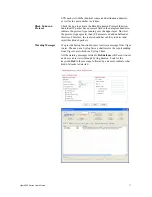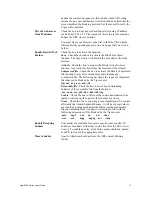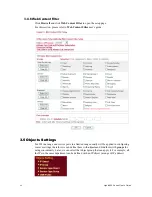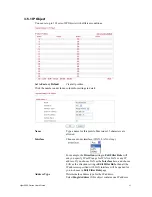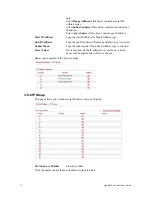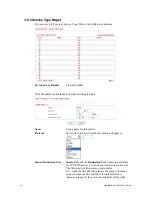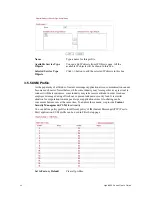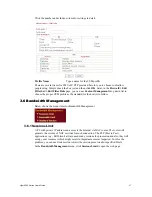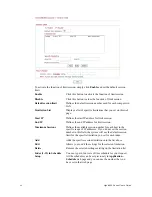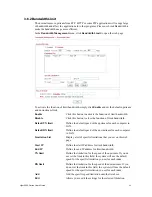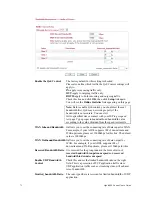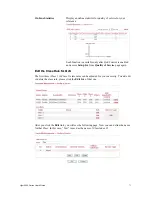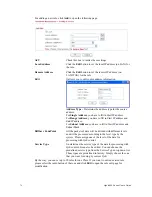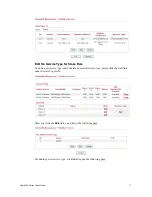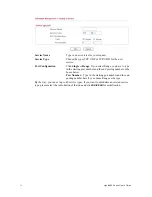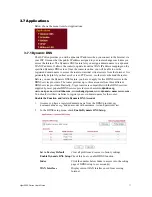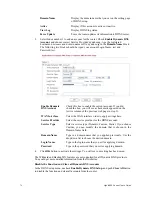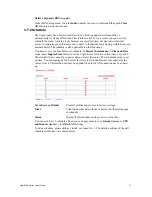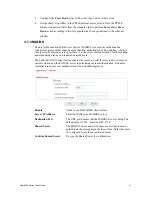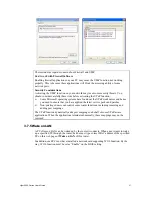
Vigor2950 Series User’s Guide
70
Delete
Remove the selected settings existing on the limitation list.
Index (1-15) in Schedule
Setup
You can type in four sets of time schedule for your request.
All the schedules can be set previously in
Application –
Schedule
web page and you can use the number that you have
set in that web page.
3
3
.
.
6
6
.
.
3
3
Q
Q
u
u
a
a
l
l
i
i
t
t
y
y
o
o
f
f
S
S
e
e
r
r
v
v
i
i
c
c
e
e
Deploying QoS (Quality of Service) management to guarantee that all applications receive
the service levels required and sufficient bandwidth to meet performance expectations is
indeed one important aspect of modern enterprise network.
One reason for QoS is that numerous TCP-based applications tend to continually increase
their transmission rate and consume all available bandwidth, which is called TCP slow start.
If other applications are not protected by QoS, it will detract much from their performance in
the overcrowded network. This is especially essential to those are low tolerant of loss, delay
or jitter (delay variation).
Another reason is due to congestions at network intersections where speeds of
interconnected circuits mismatch or traffic aggregates, packets will queue up and traffic can
be throttled back to a lower speed. If there’s no defined priority to specify which packets
should be discarded (or in another term “dropped”) from an overflowing queue, packets of
sensitive applications mentioned above might be the ones to drop off. How this will affect
application performance?
There are two components within Primary configuration of QoS deployment:
z
Classification: Identifying low-latency or crucial applications and marking them for
high-priority service level enforcement throughout the network.
z
Scheduling: Based on classification of service level to assign packets to queues and
associated service types
The basic QoS implementation in Vigor routers is to classify and schedule packets based on
the service type information in the IP header. For instance, to ensure the connection with the
headquarter, a teleworker may enforce an index of QoS Control to reserve bandwidth for
HTTPS connection while using lots of application at the same time.
One more larger-scale implementation of QoS network is to apply DSCP (Differentiated
Service Code Point) and IP Precedence disciplines at Layer 3. Compared with legacy IP
Precedence that uses Type of Service (ToS) field in the IP header to define 8 service classes,
DSCP is a successor creating 64 classes possible with backward IP Precedence compatibility.
In a QoS-enabled network, or Differentiated Service (DiffServ or DS) framework, a DS
domain owner should sign a Service License Agreement (SLA) with other DS domain
owners to define the service level provided toward traffic from different domains. Then each
DS node in these domains will perform the priority treatment. This is called
per-hop-behavior (PHB). The definition of PHB includes Expedited Forwarding (EF),
Assured Forwarding (AF), and Best Effort (BE). AF defines the four classes of delivery (or
forwarding) classes and three levels of drop precedence in each class.
Vigor routers as edge routers of DS domain shall check the marked DSCP value in the IP
header of bypassing traffic, thus to allocate certain amount of resource execute appropriate
policing, classification or scheduling. The core routers in the backbone will do the same
checking before executing treatments in order to ensure service-level consistency throughout
the whole QoS-enabled network.
Summary of Contents for VIGOR2950
Page 7: ...Vigor2950 Series User s Guide vii 5 6 Contacting Your Dealer 209 ...
Page 8: ......
Page 178: ...Vigor2950 Series User s Guide 170 ...
Page 196: ...Vigor2950 Series User s Guide 188 14 Click Send 15 Now the firmware update is finished ...
Page 207: ...Vigor2950 Series User s Guide 199 3 Dialing from VPN Client site ...
Page 208: ...Vigor2950 Series User s Guide 200 ...
Page 213: ...Vigor2950 Series User s Guide 205 ...


